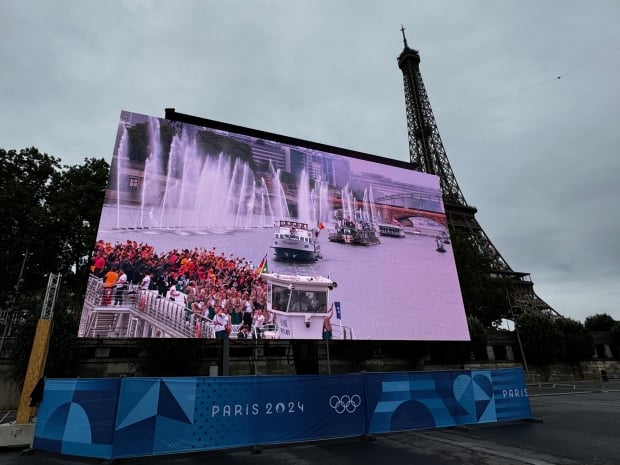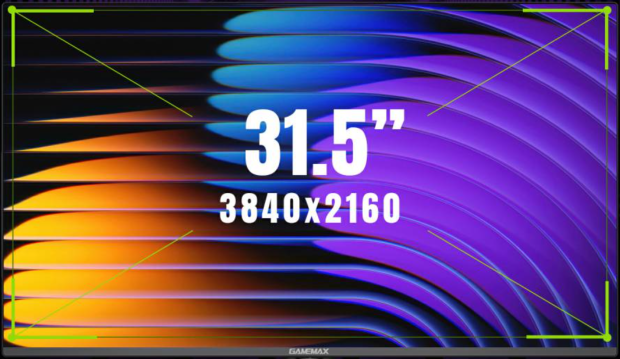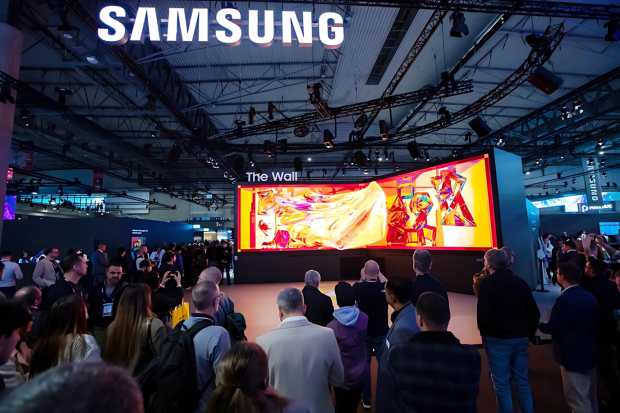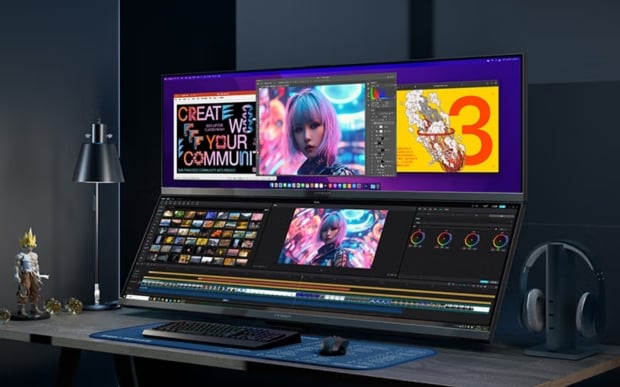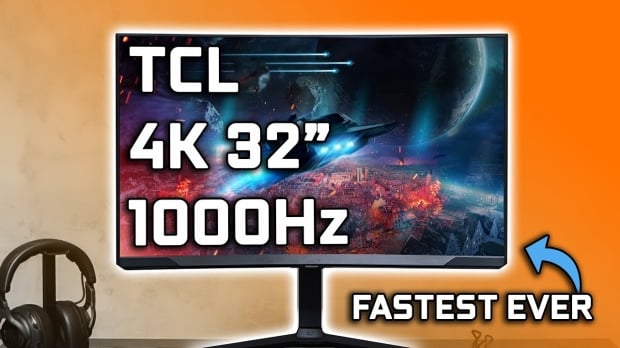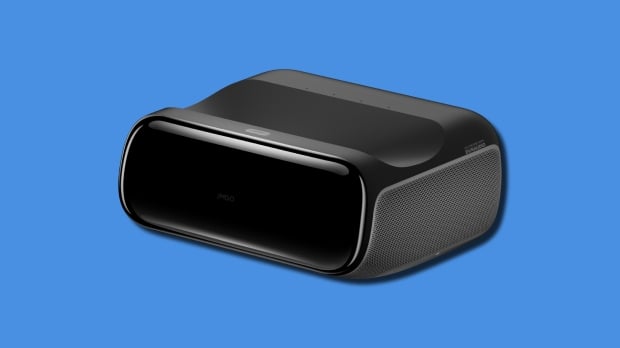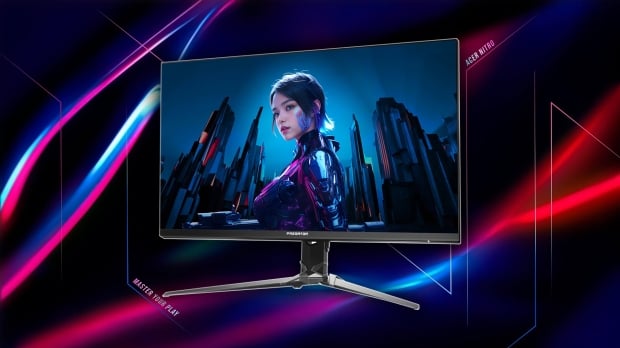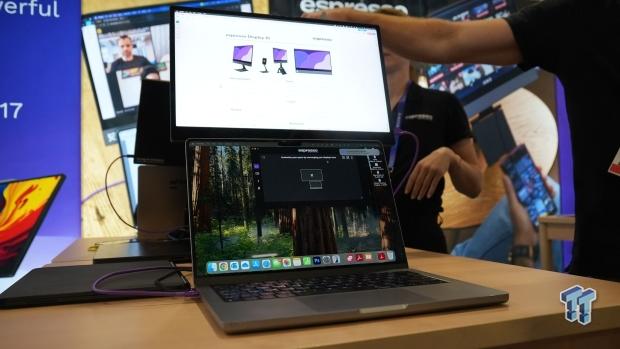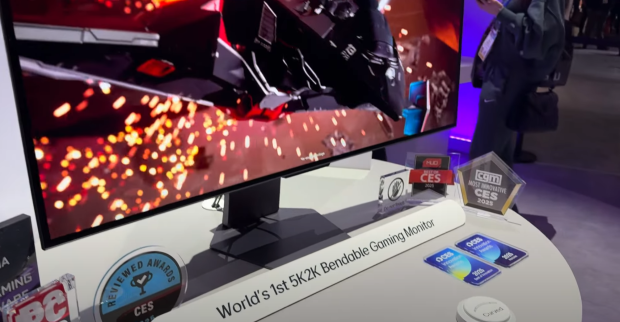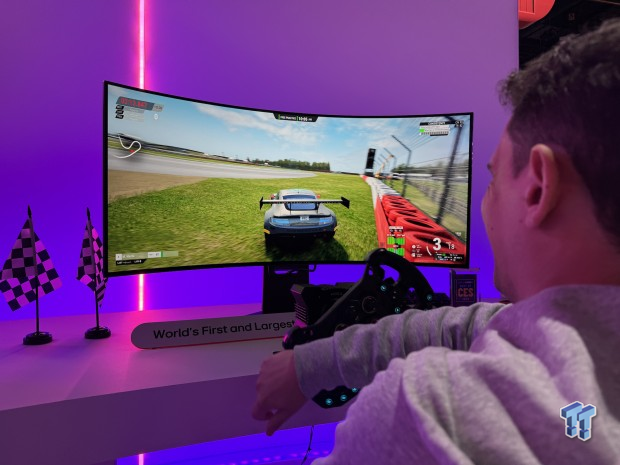Displays & Projectors
All the latest display and project news, with everything related to gaming monitors & plenty more.
This mobile LED screen is taller than your HOUSE: 767-inch 4K, insane 3840Hz refresh rate
Belgian LED display specialist Photonics showed off its insane Jumbo162 earlier month, with a bonkers 767-inch LED panel at a native 4K resolution and an even more insane 3840Hz refresh rate... yeah, 4K at up to 3840FPS.
The company is celebrating 10 years of success of its Jumbo 100, it's expanding its fleet with the new 161.5 square meter marvel, which reaches a huge 13 meters at its top. The new Jumbo 162 uses its cutting-edge Megapixel VR processing and new Helios LED processor -- which the company says is "the best in the world" -- offering the new mega-sized LED screen to have "unrivaled image quality".
The new Jumbo 162 features VantaBlack technology, which Photonics says will deliver the highest contrast thanks to its gold-wire full black LED lamps and precision shader design. The new Jumbo 162 has multiple screen modes, making it flexible enough to offer a huge 161.5 square meter screen which is 4K-ready, or a 97.5 square meter HD+ option.
GameMax splashes into the high-end display market with new 32-inch 240Hz QD-OLED gaming monitor
OLED gaming monitors are undoubtedly the best gaming monitors available on the market right now, and GameMax has now unveiled a 32-inch 240Hz variant that could be worth adding to your shortlist of potential upgrades.
The GameMax Vision GMX32UCDM sports Samsung's 3rd generation QD-OLED panel, meaning the display will feature vivid, bright colors, and an infinite contrast ratio that will create a stunning picture. It's hard to go wrong with any QD-OLED panel, especially if it features Samsung's second-generation QD-OLED panel and above. Moreover, the GMX32UCDM comes with a 240Hz refresh rate for titles that benefit from a high refresh rate - think competitive shooters. Additionally, the 0.1ms (GtG) response time will give you that edge in first-person-shooter titles.
GameMax is typically known for its cases and power supplies, and this is the company's first step inot the high-end display market. The GMX32UCDM has also been designed for gamers and content creators alike with its factory-calibrated Delta E
Samsung's new display is basically a Kindle - but 75 inches and in full color
E-ink, otherwise known as ePaper, is a display type we're seeing more and more of in consumer devices. TCL showcased its NXTPaper line of phones at CES 2025. ReMarkable arrived on the scene with paper-like tablets. In a recent announcement, Samsung showcased its range of gigantic 75-inch 5K e-ink displays.
The next-generation displays were announced at Integrated Systems Europe (ISE) 2025. Designed for commercial utility, the Samsung Color E-Paper (EMDX model) aims to provide an ink-like experience suitable for commercial signage while limiting power consumption. The Samsung E-Paper can display digital ink across the full range of colors. Impressively, it functions with a 0.00W power draw when displaying static images, and consumes minimal energy during image transitions.
Efficient power consumption is one of the key benefits of e-paper displays. For example, the TCL NXTPaper 10 can stretch a single charge to last seven days. Samsung's E-Paper display takes this efficiency even further, drawing zero power while displaying static images and consuming only minimal energy during transitions. While designed for commercial use, businesses will undoubtedly benefit from its drastically reduced energy costs.
This unique ultrawide monitor might replace your dual-screen setup for good
Dual-screen setups have become the staple for any gamer or creative who is in need of substantial desktop real estate, but what if you have grown tired of the traditional side-by-side setup?
Innocn has unveiled the 44C1G, a new 43.8-inch ultra-wide dual-screen monitor that could change the game when it comes to desktop setups. While the new monitor is certainly designed for a niche market, I can really see users who would find this monitor attractive get a lot out of it. Let's jump into the specifications. The 44C1G is two 32:9 IPS panels stacked atop each other.
Each of these panels features a resolution of 3840 x 1080 (4K wide and 1080p high), which is paired with a 120Hz refresh rate, 400nits peak brightness, and a 1000:1 static contrast ratio. Additionally, the 44C1G comes with a 10-bit color depth, 100% color coverage of the sRGB gamut, 90% of the Adobe RGB, 96% of the DCI-P3, and 86% of NTSC. Each of the color specifications is aimed at satisfying creative workflows such as video/editing editing that call for color accuracy.
NVIDIA says how it will get gamers to play their games at 1000FPS
Display manufacturers have been pushing the limits of display technology for quite some time, with TCL only last year showcasing a 4K 1000Hz gaming monitor. But what use are these monitors if the hardware to reach that figure doesn't exist?
NVIDIA believes they will eventually become the norm as the graphics cards become more powerful, and in particular, AI-powered technologies such as frame generation take center stage. In a recent interview with Digital Foundry, NVIDIA's Bryan Catanzaro, VP of Applied Deep Learning Research, where he touched on all of the new AI technologies arriving with NVIDIA's new 50-series GPUs. One of the main technologies is Multi-Frame Generation, which reduces memory costs and substantially adds more framerate to an applicable game.
Speaking on the future of gaming and how frame generation will play a role, Catanzaro explains the future of high refresh rate monitors of 1000Hz and above will be powered by frame generation. Currently, 1000Hz monitors seem like a distant future, especially if you consider that current gaming monitors are only now reaching the 240Hz+ mark at 4K (OLED). Getting to 1000Hz at 4K while also having a graphics card capable of powering that display to its maximum capabilities is still many years away, but with the jumps we have seen in DLSS performance, perhaps that future is closer than it appears to be.
Continue reading: NVIDIA says how it will get gamers to play their games at 1000FPS (full post)
JMGO's O2S Ultra 4K projector delivers a 4K 100-inch screen from just 5.75 inches
At CES, JMGO announced a pair of new impressive 4K projectors - one servicing the short-throw market with one of the most compact laser projectors we saw at the show. The other, the new JMGO N3 Ultra Max, is so bright that its 4,000 ISO Lumens can deliver a bright image even in a fully sunlit room.
JMGO describes its short-throw O2S Ultra projector as the "world's smallest laser TV," with an overall size comparable to a standard shoe box. With an impressive throw ratio of 0.18:1, the JMGO O2S Ultra projector can project a 100-inch screen just 5.75 inches from a wall. Short-throw projectors like this are great because they are quick to set up and can sit on a traditional TV cabinet.
The JMGO O2S Ultra includes the company's latest MALC 3.0 laser projection technology, designed to offer excellent color accuracy (it features 110% BT.2020 color gamut coverage and Dolby Vision support), brightness, and contrast. This is the company's flagship short-throw projector, set to launch globally in Q4 20254. If it's anything like the JMGO N1S Ultra 4K Laser Projector we reviewed in 2024, it's one to watch.
Acer unveils rare 32-inch 5K Predator gaming monitor at CES 2025
Acer unveiled a unique gaming monitor at CES 2025, and it very well could be the perfect fit for a gamer who is looking for high pixel density on a 16:9 display.
CES 2025 caused a tsunami of new gaming monitor announcements, and after exploring the showroom floor and being invited to numerous suites to check out offerings by companies, you begin to notice the direction monitor technology is heading - OLED. However, Acer has decided to take a left turn with the unveiling of the Predator XB323QX, as this 32-inch gaming monitor features an IPS panel and an odd maximum resolution of 5,120 x 2880.
According to Acer's specifications sheet for the display, the Predator XB323QX is capable of reaching 144Hz at its 5K resolution, but users have the option of switching the resolution down to 2560 x 1440 (QHD), which enables the refresh rate to be bumped up to 288Hz. Additionally, the Predator XB323QX features a 0.5ms GtG response time, NVIDIA G-Sync Pulsar, 10-bit color depth, and support for 95% DCI-P3 or 99% sRGB color gamut. As for connectivity, Acer has equipped the Predator XB323QX with DisplayPort 1.4 and two HDMI 2.1 ports.
Continue reading: Acer unveils rare 32-inch 5K Predator gaming monitor at CES 2025 (full post)
Espresso Displays showcases the 15-inch portable monitor I've been waiting for
A good portable display is surprisingly hard to come by, but at CES 2025, Australian company espresso Displays showcased the portable monitor I've been waiting for.
Introducing the espresso 15 Pro, a 15-inch touchscreen display that offers a 3840 x 2160 (4K) resolution at a 60Hz refresh rate. The 15 Pro is capable of 550 nits of brightness, which is brighter than the company's popular 17 Pro, and espresso informed me at their booth on the CES showroom floor that all of the monitor's juicy specifications are powered through a single USB-C cable. As for design, espresso has outfitted the 15 Pro with a sleek aluminum housing that is paired with the company's new ergonomic stand, which the monitor attaches to magnetically.
espresso gave me a run-through of the company's software, espressoFlow, which enables users to rearrange their display in relation to where the main monitor is located. The 15 Pro supports both portrait and landscape orientations and is able to be paired with any device capable of outputting a display signal via USB-C. espresso was unable to tell me when the new 15 Pro will launch and for what price, but given it was unveiled at CES 2025, we can expect it to arrive on the market sometime this year.
Here's the world's first 5K2K monitor that bends from flat to curved in seconds
LG unveiled at CES 2025 what it has been working on behind closed doors when it comes to OLED pixel technology, and the new products reinforce the company as one of the world's leading brands in display technology.
LG has added three new gaming monitors to its UltraGear line-up of gaming monitors, with one in particular catching the attention of not only myself but almost anyone who walked past it at the LG booth. The new UltraGear GX9 series adds three new curved gaming monitors, which all feature LG's WOLED technology and two of the three are the world's first displays in their own categories.
While I have covered the other here, LG let me go hands-on with the world's first bendable 5K2K gaming monitor, which features the company's second-generation Dual-Mode, meaning gamers are able to quickly switch resolution and refresh rate to suit the game they are playing. The new display, 45GX990A, is a 45-inch gaming monitor that sports a resolution of 5,120 x 2,160, which is paired with a 165Hz refresh rate when at its maximum resolution and up to 330Hz when the monitor is placed in Wide Full High Definition (WFHD) mode.
LG levels up gaming with the world's first 5K2K gaming monitor
LG has showcased a world's first gaming monitor at CES 2025, and it features a monster resolution of 5120 x 2160 (5K2K) across a 45-inch panel.
CES 2025 has caused a wave of new gaming monitor announcements, and LG has pushed the envelope of what's possible with a gaming monitor even further with the showcasing of the UltraGear GX9 series, which was initially announced on December 30, 2024. One of the new gaming monitors, the 45GX950A, was officially unveiled at CES 2025, and I was lucky enough to be able to go hands-on with it on the showroom floor.
For those wondering about specifications, LG describes the 45GX950A as the "World's First 45-inch 5K2K OLED Gaming Monitor with 800R Curvature and DisplayPort 2.1." More specifically, this stunning panel features a 5K2K resolution across a 21:9 aspect ratio. But gamers aren't limited to 21:9 as LG has equipped the 45GX950A with the company's second-generation Dual-Mode, which enables users to easily switch between 21:9 and 16:9 aspect ratios.
Continue reading: LG levels up gaming with the world's first 5K2K gaming monitor (full post)


